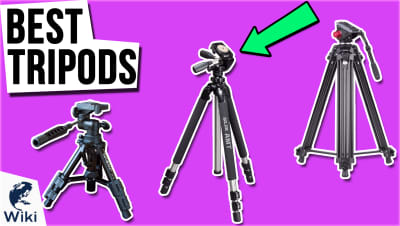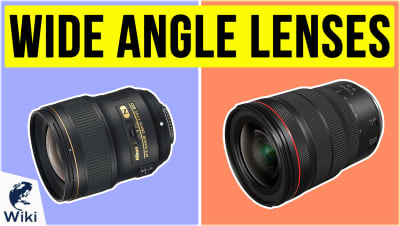The 10 Best Monopods

This wiki has been updated 47 times since it was first published in February of 2015. Perfect for stabilizing indoor and outdoor shots without forcing you to carry around a heavy tripod, these monopods set up in seconds and provide a secure stand for videographers and photographers alike. Some are even strong enough to double as walking sticks when hiking to a nice shooting spot. We've ranked the best that the business has to offer by performance, durability, and ease of use. When users buy our independently chosen editorial selections, we may earn commissions to help fund the Wiki.
Editor's Notes
December 03, 2020:
A good monopod has to strike a balance between sturdiness and convenience, as they're most useful in settings where it would be hard to carry or set up a tripod. That's why we were so impressed with the iFootage Cobra 2, which offers a modular frame allowing you to quickly remove the head to change out your setup, or detach the foot to use as a standalone mini-tripod. The jointed base can swivel or tilt freely, yet locks in place securely. This model narrowly edges out the Manfrotto Xpro 5 Carbon Fiber for the top slot, due to its lower cost and higher weight capacity, though if you value portability over strength you may still prefer the lighter and more compact Manfrotto.
Those with truly beefy camera rigs will want to seriously consider the 3 Legged Thing Alan, which has a staggering 100 to 1 weight ratio, capable of supporting up to 130 pounds despite weighing only 1.3. Meanwhile, if your primary concern is extension, the remarkably long and stable Gitzo GM4552L may be your best bet. Just keep in mind that its high-end quality is reflected in its price tag.
We eliminated the Amazon Basics Carbon Fiber based on a concerning number of reports that it was prone to pieces snapping off and sections sliding free. And many customers noted that the Benro 3 Series tended to come loose at the base, particularly when users were taking advantage of its pivoting ability. Combined with a very low weight capacity, we felt this made it hard to justify its cost, which appears to have increased since it was first added to the list. We also replaced the Benro 4 Series S6 with the Vanguard VEO 2S, which is lighter, sturdier, and less expensive, with a comparable maximum extension.
Take a look at our other lists if you're trying to decide on a camera or lens to go with your new monopod. We've also reviewed other kinds of photography equipment, from camera bags to robotic mounts.
April 04, 2019:
The stability and durability of the Manfrotto XPro 5 lead us to conclude that it deserved a higher ranking on this year's list, and it made its all the way to number one on the strength of its build quality and performance. Neewer's model held steady at number two thanks to its reliability, both in use and in its low price point. They prove to be one of the few companies to have gone from a brand-x classification to a real competitor in a number of fields over the past five years or so. Slipping to the last spot on our list was the offering from Opteka, whose leg sections were rather difficult to tighten sufficiently. They do get there eventually, which is why it stayed on the list at all, but it takes a bit of elbow grease.
Three Legs Aren't Always Better Than One
Your monopod is also going to be extendable, with one to three extension points which get thinner as you extend down the build.
Mathematically speaking, I understand why the tripod gets so much of the glory. After all, the triangle is the stablest, strongest geometric shape out there. A tripod is a versatile, rugged piece of equipment that you can outfit with any number of heads to suit your shooting needs.
But so is the monopod. In fact, the monopod provides almost all the features and benefits of a tripod in a lighter, more mobile package. We're talking about only having to deal with one leg instead of three, after all.
Good monopods are made from aluminum or similar metals, with carbon fiber materials forming the most expensive models on the market. Those carbon fiber models are significantly lighter than their metallic counterparts, but they're just as durable and can hold as much weight, if not more.
At the top of your monopod is a 3/8" male thread mount, perfect for attaching a tripod head. If you want to attach your camera or your lens mount directly, that 3/8" thread should slide down to reveal a 1/4"-20 male mount that lives at the center of the 3/8" mount. The 3/8" threads are spring-loaded, so you can push them out of the way simply by screwing your 1/4"-20 female piece into place, and they'll jump right back into position when you remove the smaller hardware.
Your monopod is also going to be extendable, with one to three extension points which get thinner as you extend down the build. Even with your monopod at full extension, its simple construction will allow you to rapidly change positions while keeping the stability you need for longer, sharper images.
Locking Into Place
The eternal question facing potential buyers of monopods and tripods alike divides the multitudes into a pair of irreconcilable camps. That question: do you snap, or do you screw?
The legs of tripods and the single post of any monopod extend by releasing a series of thinner legs out toward the ground. Those release mechanisms are universally one of two types.
The eternal question facing potential buyers of monopods and tripods alike divides the multitudes into a pair of irreconcilable camps.
The original type, the kind you could see on tripods and monopods reaching back decades, is the screw type. The joints between monopod leg segments on this type release and extend only when you unscrew a simple, threaded tightening element, which locks your legs in the extended position when you tighten it once again. The great advantage of this type is its durability, but it makes for a longer process in the extension.
Also, it's harder to know for sure that you've effectively tightened a screwing monopod, and one experience in which you fail to properly secure a leg could cost you your camera equipment should the monopod collapse on itself. After an experience like that, you could find yourself paranoically over-tightening the joints to the point where you'd strip them, rendering your monopod more or less defunct.
The other type of monopod extension is the snap type, which operates its joints with locking, spring-loaded levers. These give you the great advantage of assurance, of the knowledge that your monopod is, indeed, locked into place without fear of over-tightening. They are, however, theoretically less durable than the screw type, since they can suffer more extensively from an impact when they're in the open position.
In my personal experience, however, I've put this type of joint lock through the ringer on a single monopod for nearly a decade, and I've never had a locking tab break on me. The cheaper models might cut corners here, and that could come back to bite you, but if you spend a little extra, this snap type should last for years.
Strength In Carbon
Photographers have utilized anything and everything they could get their hands on to stabilize their images since the birth of the art form in the early 19th century. It was especially important in those days as exposures took so much longer. More often than not, photographers in those days employed tripods, though as exposure times decreased toward the end of the century, monopods became feasible alternatives to their bulkier cousins.
Even as Japan's economy has normalized, its dominance in all things photographic, and the global dominance of carbon fiber in photographic stability, remains secure.
At this point in the history of photographic accessories, neither tripods nor monopods could effectively collapse, so a monopod proved more mobile than a tripod for capturing important events from more angles.
Collapsible models of tripods and monopods really came into their own in the 1950s and 60s, as advances in metallurgy following the second world war allowed for more complex threading, piping, and locking designs.
Still, the tripods and monopods of those days were predominantly made of steel, and their weight was a problem. In the late 60s, however, advances in the promise of carbon fiber led the Japanese government to subsidize its refinement and manufacture, with companies like Toray and Mistubishi pouring resources into the field.
As Japan's economy grew to unprecedented heights in the 1980s and 90s, massive growth in the photographic sector coincided with breakthroughs in carbon fiber quality to bring the market its most durable, lightest-weight tripods and monopods. Even as Japan's economy has normalized, its dominance in all things photographic, and the global dominance of carbon fiber in photographic stability, remains secure.















